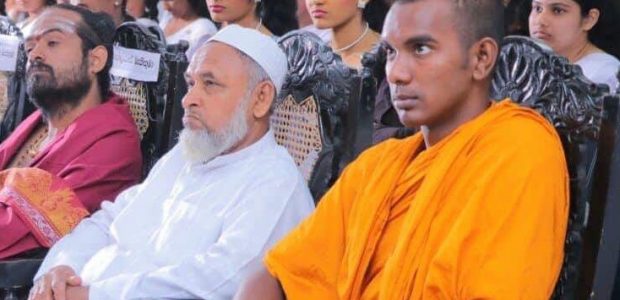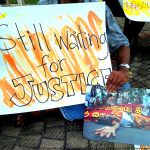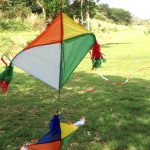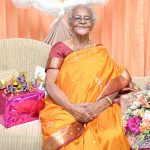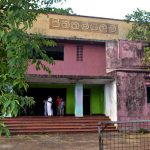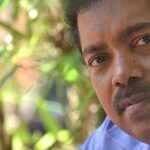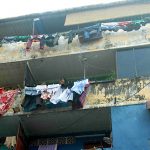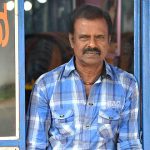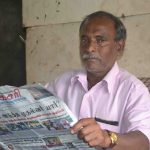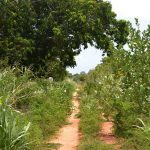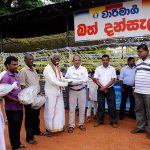“I wanted to be a bridge to the divide.”
Matale Sunitta Thero is a bi-lingual Buddhist monk. Though his religion and Tamil language instruction, he brings Tamils and Sinhalese closer together.
Matale Sunitta Thero is a Buddhist Bhikku monk from the small village of Varapitiya and a Tamil language teacher. His father Kumaraswamay was also from Varapitiya village and his mother Saraswathy was from Gonduruwava, Diyapeduma in Polonaruwa. His parents’ families were the only Tamil families in their villages.
Though Thero was born a Tamil, his primary education was in Sinhala, and his higher education in Tamil. He therefore became proficient in both languages. He has been teaching Tamil at a temple in Kalutara for the last five years to government and court officials, public servants, school students from the 2nd to 9th grade and those sitting scholarship exams. Thero said the patience, tranquility and the manner of dealing with problems learnt through Buddhism have helped him in performing this public service, regardless of students’ racial or religious differences.
Everyone is surprised to see how a Buddhist monk teaches Tamil, because they don’t know that I was born a Tamil. Everybody except us in our village was Sinhalese. Along with pictures of Hindu gods we had Buddha’s image; we worshipped all of them. The Sinhalese in those areas had been very friendly to us.
There was a Buddhist temple near our home. I used to go there often. I embraced Buddhism due to the attraction of that religion when I was 12 years old. I was ordained a Buddhist monk in 2008. It was the chief incumbent of that temple who advised me to continue my higher education in Tamil. He helped me a lot in this regard. This understanding of the importance of a co-language is a must for our country. If we learn the language, shedding ethnic differences, the ability to understand the other community will grow. It will help one maintain friendships with fellow people and exchange feelings with them. In that sense, I wanted to be a bridge between the divide.
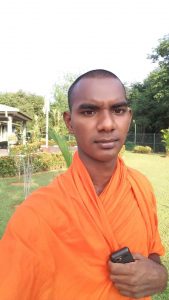
I personally can converse in both Sinhala and Tamil. I can understand the sentiments and feelings of the Sinhala and Tamil people, and also the justifications from their sides. If this kind of understanding exists, there will be fewer problems in our country. Realizing this, I improved my Tamil language and teach it to Sinhala students.
About 10 percent of Sinhala students learn Tamil merely because of their love of the language; they are not sitting for any examination. I feel very happy about that. Moreover, those engaged in business activities in the North and the East are also interested and enthusiastically learn Tamil. They are between the ages of 50 to 60.
The rulers who administered our country for so long did not that they must make Tamil a second language by law. The second language is compulsory only in grades 2 to grade 9. After that it is optional. It is necessary to make Tamil and Sinhalese compulsory subjects by law, for everyone.
I will not vote even in future elections. Different sides had taken different steps to create unity and goodwill among ethnic groups during the last nine years in the aftermath of the 30-year war. The Buddhist monks can also play a major role in this task. There are two sides of a coin, similarly, there are two sides in the Bhikku community as well.
There is generally political discontent among Tamils about Buddhism and Buddhist monks in Sri Lanka. This is due to the racist view held by some Buddhist monks, such as Gnanasara Thera and organizations such as Bodu Bala Sena and Ravana Balaya. The Tamil people are suspicious of the Buddhist monks. These monks are the first to oppose any solution when it comes to settlement plans for the Tamil national question. Buddhism came with the Hindu religious background from India. It is a religion of great philosophy. But, due to the political activities of a few Buddhist monks, Tamils have been forced to ignore Buddhism. Due to this, it is inevitable that a few Tamils have a tendency to hate even the Sinhala language.
There was a conflict between the Sinhalese and the Tamils regarding the temple, which was built in 1945 in Kankesanthurai in the North. The war had completely destroyed that temple. There were five Tamil families temporarily settled in the land where the temple was. I was able to negotiate with them and helped them get legal land in another place. I brought about a compromise between the two sides and gave a reasonable solution without harming anyone. My talent in both these languages helped me solve this problem.
My future plan is to teach Buddhist philosophy in Tamil. I delivered a speech in Tamil about ‘the significant of Vesak’ for the students of Payagala Hindu College in Kalutara. Learning a language is like learning the identity, culture and habits of an ethnic group. If you want to learn about an ethnic group, the best way is to learn their language to communicate with them. I have understood this clearly. My task is to make others realize it.
